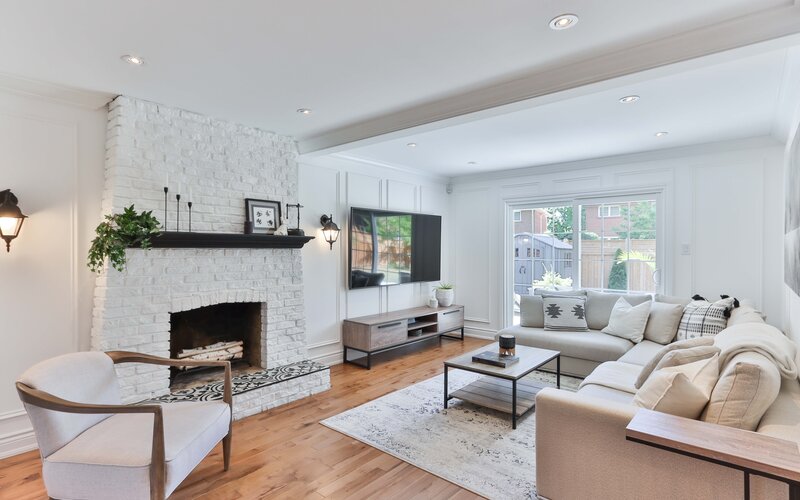If you’re like me, you’ve always dreamt of owning your own property. Unfortunately, getting into the housing market is tough with some of the strongest property price growth on record.
From rising interest rates to record-high house prices to supply and demand issues - there are a few hurdles you’ll need to jump over before you can call yourself a home owner.
But there are still things you can do to buy a home sooner rather than later. While you might need to shelve the dream of living in a house with a big backyard for now, let’s go over some strategies for first home buyers trying to break into Australia’s tight real estate market.
Advertisement
Buying a home or looking to refinance? The table below features home loans with some of the lowest interest rates on the market for owner occupiers.
| Lender | Home Loan | Interest Rate | Comparison Rate* | Monthly Repayment | Repayment type | Rate Type | Offset | Redraw | Ongoing Fees | Upfront Fees | Max LVR | Lump Sum Repayment | Extra Repayments | Split Loan Option | Tags | Features | Link | Compare | Promoted Product | Disclosure |
|---|---|---|---|---|---|---|---|---|---|---|---|---|---|---|---|---|---|---|---|---|
5.54% p.a. | 5.58% p.a. | $2,852 | Principal & Interest | Variable | $0 | $530 | 90% |
| Promoted | Disclosure | ||||||||||
5.49% p.a. | 5.40% p.a. | $2,836 | Principal & Interest | Variable | $0 | $0 | 80% |
| Promoted | Disclosure | ||||||||||
5.64% p.a. | 5.89% p.a. | $2,883 | Principal & Interest | Variable | $250 | $250 | 60% |
| Promoted | Disclosure | ||||||||||
5.64% p.a. | 5.89% p.a. | $2,883 | Principal & Interest | Variable | $248 | $350 | 60% |
| Disclosure |
General tips for first home buyers
Lloyd Edge (pictured below), director of Aus Property Professionals, provided some tried-and-true tips for first home buyers looking to enter the property market:
-
Consider a mortgage broker if you're uneasy about starting the home buying process, and compare your home loan options.
-
Shop for a property under your budget so you’re not at the top of your capacity, which could spell bad news if interest rates were to rise, which they are.
-
Consider costs other than the deposit such as strata fees, stamp duty, building and pest inspections, and so on.

Lloyd Edge believes rentvesting could be the “best strategy” for first home buyers. Source: Supplied
1. Rentvesting
One of the main strategies geared towards younger people trying to break into the market is rentvesting. A relatively new-fangled term, rentvesting involves living in a rental property while also renting out your own investment property.
Usually rentvesters will buy a property in a more affordable area that they don’t necessarily want to live, while renting in an area where they can’t afford to buy. That said, they tend to borrow more money than owner occupier first home buyers.
Last September, National Head of Growth & Leasing at :Different Kasey McDonald called rentvesting the “perfect” way to break into the property market. But there are both pros and cons to rentvesting that should be considered before deciding if it’s right for you.
Mr Edge said leaving some cash aside and opting for a cheaper property could be a way forward.
“Buying your own home to live in can end up being a liability if you put all your savings towards the deposit, you’re maxed out in debt and struggling to make mortgage repayments if interest rates go up,” Mr Edge said.
Mr Edge said that by rentvesting and building a property portfolio on the side, you can leverage your built-up equity down the track to buy your dream home - which you would presumably live in.
“Rentvesting also allows you to make strategic decisions about where to buy property for the best growth, and you can buy properties from all around the country, instead of making an emotional decision based on where you want to live,” he said.
Pros of rentvesting
As you may have guessed, one of the main pros of rentvesting is that you can buy a home sooner. If you can’t afford to purchase a property where you need to live, but you’re itching to sink your teeth into property investment, rentvesting might be a good option.
Get on property ladder sooner
Lloyd Edge, Director of Aus Property Partners, said rentvesting is a great way to get into the property market for those that can’t afford to do so where they want to live and work.
“It means people can get onto the property ladder sooner, instead of waiting until they can afford something they’d like to live in, which might not even be possible, as property prices in capital cities will continue to climb long-term, and most likely will be out of reach for many first home buyers,” Mr Edge told Savings.com.au.
“Rentvesting means you’re not tied down by a mortgage, and you have more freedom to live wherever you want.”
Could be cashflow positive
Mr Edge also said it’s good for cashflow coming in, which will increase your income and could improve your serviceability with banks.
“[This means] that it will be easier for you to buy your dream home to live in down the track,” Mr Edge said.
“If you make strategic property choices and build up a portfolio of investment properties, you can leverage these properties down the track to buy your very own ‘dream home’ to live in.
“Ultimately, using this strategy you’ll be much better off financially in the long-term than if you tried to begin your property journey by squeezing every penny to buy a small apartment to live in.”
Matt Peden, Principal at Independent Property Group, said rentvesting has its perks especially if you buy interstate where there are potentially better capital growth opportunities.
“However, the minimum deposit required by lenders is at least 10% more than for those looking to buy an owner-occupied property,” Mr Peden told Savings.com.au.
“Here you need to be mindful of tax implications like negative gearing.”
When owning a property - even if it’s not your primary place of residence (PPOR) - you should start to accumulate equity as you pay down your mortgage and its value increases. This could help you when looking to buy your next property.
Don’t sacrifice lifestyle
Another pro is that your borrowing power won’t affect your lifestyle. Just because you can’t afford to buy where you want to live, that doesn’t mean you can’t buy elsewhere. You can continue to live that inner city lifestyle while owning out in the 'burbs.
Tax benefits
The last main pro of rentvesting is that there are tax benefits for investment properties.
Yannick Ieko, CEO of SMSF Loan Experts, said rentvesting is a ‘great’ tax efficient way to get into the property market and start building wealth.
“The more interest rate increases, the more attractive it should become compared to purchasing a principal place of residence straight up,” Mr Ieko told Savings.com.au.
As a property investor you can take advantage of things like negative gearing if making a loss, and capital gains tax discounts.
Cons of rentvesting
Ultimately, the main con of rentvesting is that you still need to live in a rental. You won’t have the same freedom you have when you own a home to make changes to suit your preferences, and there’s not a lot of stability.
You can’t make changes to your rental
You probably can’t paint the whole house you're renting green or install a smart toilet.
“Since you’re renting, you most likely won’t be able to renovate or make any changes to the property,” Mr Edge said.
“By renting where you live, you’ll have to deal with landlords, and there’s always the possibility that you’ll have to move out if the landlord wants to renovate, sell, or move in themselves.”
Might lose access to government schemes
Another con to rentvesting is that you lose access to most government schemes (which we’ll talk about later). Most of the government’s low deposit schemes and its newly-proposed shared equity scheme are geared towards owner occupiers - which you won’t be.
You can only be a first home buyer once, so if you go the investment property route, you may not have access to this type of support again.
Rental costs could be a burden
Mr Edge also mentioned the tight rental market in Australia right now, which will likely mean you’ll be paying a lot to live near the city.
“With rental prices going up in the major capital cities you’ll be paying more and more out of your own pocket for rent, and the fierce competition for the best properties is only going to keep pushing prices up,” he said.
You will also need to pay ownership costs on top of your rent. While you will (hopefully) have a tenant in the property to take some of the weight off your wallet, there’s no guarantee that you’ll break even.
Regions are experiencing a boom
Also, your home also won’t necessarily grow in value. Housing values in a lot of regional areas shot up over the past two years, so your pool of affordable spots may have shrunk too.
With the housing boom somewhat behind us, you may not see your home’s value increase within a few years of ownership, which may not be helpful if you want to buy and sell pretty quickly.
2. Buying an apartment
The second potential way to crack into the property market we’ll touch on is to buy an apartment instead of a house. The main reason this might be a suitable option for first home buyers is because, generally speaking, apartments are cheaper than houses.
But there are reasons for this, and of course, pros and cons to consider when looking at this type of investment option.
Buying an apartment will only be suitable for people that want to live in an apartment. Or you can buy an apartment as an investment property and rentvest; talk about two birds with one stone.
Assuming you want to live in your apartment, there are a few considerations to take into account before deciding if it’s the right option. Let’s play a quick game of ‘this’ or ‘that’:
-
Do you want a big backyard, or an onsite pool and BBQ areas also shared with your neighbours?
-
Do you need a lot of space for your fam, or would you rather have a small, easily maintained home?
-
Do you want your own carpark/multiple car spaces, or can you share one large carpark with others?
-
Are you buying an apartment for capital gains, or do you want to live in an apartment for lifestyle reasons?
These are just a few prompts to spark some self reflection. Apartment life isn’t for everyone; your neighbours are right next to you, you may need to share some spaces, and it may be located in a busy area. These things may bother you, or they may not.
Also read: House vs apartment: Which is better for first home buyers?
Pros of buying an apartment
Generally cheaper than houses
Mr Ieko said the main advantage of buying an apartment is its price point.
“The advantage is that it is cheaper and easier to get into an apartment as they start from studio sizes right up to penthouse,” he said.
Mr Edge shared this sentiment, and said you’ll probably be paying an entry-level price so the deposit required will be less.
“Although even one-bedroom apartments in blue chip suburbs can cost as much a four-bedroom house in a less expensive suburb,” Mr Edge said.
Mr Peden seconded the fact that apartments are generally cheaper, and that while houses generally have better capital gains over time, they can be difficult to buy as a first home buyer.
“On the other hand, apartments are cheaper, and if they are in a good area, investors can turn them into short-stay properties and generate more money,” Mr Peden said.
Less maintenance and more facilities
“Apartments are generally lower maintenance than houses, and you’ll have no backyard to take care of,” Mr Edge said.
There are also other pros to buying an apartment. You could have added security (if you live in a nice apartment complex), where people have to be buzzed into the building.
You may also have access to amenities such as a pool, BBQ area, lifts, gym, or even a sauna if you’re really living it up. If you’re a clean freak, an apartment is probably quicker and easier to clean.
While these are mostly lifestyle pros, they’re still important when making your decision.
Cons of buying an apartment
Capital growth typically not as strong
Probably the biggest potential con to buying an apartment is that they don’t usually increase in value like houses do.
When people say the value is in the land, it’s true. Most of your property’s value lies in the land it’s sitting on, and when you own an apartment, not only is it smaller than a block of land you don’t even own the whole thing.
“Apartments generally see slower capital growth than houses, which means you won’t be building up as much wealth long-term and might have trouble leveraging the equity to buy a bigger place down the track,” Mr Edge said.
If you’re looking for your asset to grow in value (which you should be), buying an apartment likely won’t deliver the same growth as you’d see when buying a house. However past performance is not an indicator of future performance and yada yada yada.
Also read: Why do house prices seem to appreciate faster than units?
Body corporate or strata fees
This leads me into the second con of buying an apartment, which is strata or body corporate fees. Since you’ll be sharing common areas - like the driveway, carpark, pool or other amenities - your property will be on what’s called a strata title.
“You’ll be paying corporate levies and strata fees, which in some cases could be even more expensive than insurance on a house,” Mr Edge said.
You’ll likely be whacked with body corporate fees, which will usually run you anywhere from $1,500 to $25,000 per annum. On average, you’ll likely be charged $5,000 to $6,000 each year, but prices will vary depending on the amenities in which you have access.
Less independent than if you owned a house
When you become a part of the strata scheme, you also become responsible for the upkeep and maintenance of your property. You may also be limited in what you can do to the apartment (e.g. renovations), and you’ll likely need to run any potential changes through your strata beforehand.
More potential cons include a lack of privacy and close proximity to your neighbours. If you live in a sea of apartment buildings, chances are someone could be looking into your home at all times.
So if you love walking around naked or sitting on the couch with your hand down your pants, beware of onlookers enjoying the view.
Or if you end up living next to rowdy teenagers or a very loud couple, you’ll have to buy yourself a pair of sound-proof headphones to get by. Certain apartment buildings have better noise insulation than others, so be warned.
3. Using government incentives
Another avenue into homeownership could be using government incentives. Over the past two years, the government introduced a range of schemes to help people buy their own homes. From the New Home Guarantee to HomeBuilder to state-run shared equity schemes, we’ve seen it all.
With Labor winning the election, chances are its proposed shared equity scheme ‘Help to Buy’ is going to come alive.
There are definitely pros to using government incentives, such as buying with a low deposit or even buying with the government, but you should also weigh up the cons before deciding its the right move for you.
We won’t dive too deep into the specifics of each scheme, as they’re soon set to change with the new government in power (and there’s so many of them, some of which are delivered by state governments). From new schemes to name changes of old schemes, there’s a lot to keep up with.
Also read: How does Labor’s win affect the housing market?
Pros of using government incentives
The idea behind these schemes is to help people buy their first homes with a lower deposit and get into the market sooner. This could help you get ahead of the curve when it comes to rising house prices, but if we’re really being honest with ourselves, we may have missed the bus on that one.
Improves accessibility
“Using a government scheme, for example the ‘First Home Buyer’s Grant’ or our new Labor government’s proposed ‘Help To Buy’ scheme, will help more first home buyers get into the market sooner with a lower deposit,” Mr Edge said.
“[This can be] great for people on lower incomes who may need extra help to secure their first home.”
There are a range of government schemes to choose from, and in many cases, you can use two or more to give yourself your best boost possible.
For example, you can use both the First Home Super Saver Scheme (FHSSS), your state or territory’s first home owners' grants, and even the Home Guarantee Scheme if applicable.
Get into a house, not an apartment
Another pro is that you can probably afford to buy a house rather than an apartment. Depending on which scheme (or schemes) you’ve used, you could buy with a lower deposit AND have more money saved, which can help you borrow more.
“The no LMI scheme is quite attractive and helpful,” Mr Ieko said.
“The shared equity scheme which will soon be implemented has deeper implications for buyers and, while I think it could be very useful for some people, I would say that potential users should definitely get some professional advice before proceeding with it.”
Government schemes such as the New Home Guarantee or Regional Home Guarantee provide home owners the ability to jump into a home with as little as 5% deposit without paying LMI.
These schemes are usually contingent on the fact you’re building or buying a house.
Cons of using government incentives
Limited places
One major con to government schemes is that there are usually limited places.
“For example ‘Help To Buy’ will be limited to a maximum of 10,000 people per year, so you’ll have to make sure you apply quickly or you might miss out,” Mr Edge said.
“You may have to move regionally (if you live a major capital city) to find an affordable house that fits within the government specified budget.”
Loans written to first home buyers typically amount to around 10,000 in any given month.
The government might want a slice of your house
Mr Edge spoke specifically about the government’s shared equity scheme ‘Help to Buy’, where the government would own up to 40% of your home.
“[This] means they’ll also own 40% of the capital growth on the property, which is something to consider seriously if you plan on selling the house down the track to leverage the equity and buy something better,” he said.
“Also, if your financial circumstances change and you start earning more than the income threshold, you’ll have to start paying the government back for their 40% stake in your property. If you inherit a property and you earn over the income threshold, you’ll have to either sell or start paying the government back for the 40%.”
Might not actually help affordability
Lastly, Mr Edge said a con of government schemes in general is that they have the potential to push property prices even higher.
“By increasing housing affordability for those on lower incomes, it ends up increasing the demand for properties, which will in turn will see the prices rise,” he said.
Think of it as robbing Peter to pay Paul. Any leg-up for home buyers potentially bids up the prices of properties. This means you could face stiffer competition at certain price brackets, while also leaving future home buyers more out of touch with their goals.
4. Getting a guarantor home loan
If you can’t qualify for a home loan on your own, you could look at a guarantor home loan. This would mean someone - usually your parents or another family member - uses their equity as security for the loan. If you’re unable to repay your debt, they’d need to cover for you, or their assets could be on the chopping block.
By using a guarantor, you could borrow 100% or even 110% of the property’s value. The guarantor won’t be securing the whole amount, but they can secure up to 20% to get you in the door. From there, it’s up to you to keep up with your repayments.
As you can imagine, being a guarantor is quite a risk to take on. So there are definitely pros and cons to consider not just for you, but for your special someone that you’re asking to put in financial jeopardy.
Pros of guarantor home loans
Mr Edge said a guarantor loan is particularly great if your circumstances make it difficult to secure a home loan.
“For example, if you’re a young person that’s had a job for less than 12 months, or you don’t have enough of a deposit saved up, then using a guarantor loan will help you break into the property market sooner,” he said.
Mr Peden said guarantor loans can also be helpful if you are struggling to save a 20% deposit.
“It can be hard to save a 20% deposit,” Mr Peden said.
“Getting a guarantor loan can help borrowers avoid paying LMI.”
Cons of guarantor home loans
Obviously, the main con is that you need to burden someone with your home loan.
“Guarantor loans are often fraught with complications. It can become a liability, and if you’re using your parent’s house (for example) as security for the loan it can be very risky,” Mr Edge said.
“If you want to go down this route, ensure that you seek advice from a lawyer, and educate the person who’s going to be guarantor so they’re fully aware of all the risks involved for them.”
5. Buying with family or friends
Finally, we’ll touch on buying a home with a friend or family member. If you can’t go at it alone, why not buy with someone you know and trust?
Buying with a friend or family member is exactly what it sounds like: combine forces with a loved one and buy together. This can be helpful if you don’t have the borrowing power by yourself, but don’t have a partner to buy with. But it also comes with a fair share or risks/might not be suitable for all.
Pros of buying with family or friends
As we mentioned, the main pro of buying with friends or family is that your borrowing power increases. This means you might be able to afford to buy a house, or just buy in general, and get on the property ladder sooner.
Not only can your borrowing power increase, your deposit amount may increase too. Let’s say you saved $20,000 and your friend saved $20,000; now you have a $40,000 deposit rather than your own $20,000.
“As with many of the previous strategies, buying with friends or family can help you to get into the property market sooner if you’re struggling to save up a deposit on your own,” Mr Edge said.
Cons of buying with family or friends
“The biggest con for this strategy is that it can end up tearing apart families and ruining friendships if things go wrong,” Mr Edge said.
“If you’re interested in trying this strategy, ensure that you seek professional legal advice and sign a joint venture contract.
“Be upfront about your expectations from the get-go, and make sure that all parties involved are on the same page regarding details like who’s going to be responsible for maintenance costs, how will the profit be split if the property is eventually sold - and so on.”
Basically, there’s a chance owning a property together can cause a rift. If you choose to all move in together, for example, there’s always going to be disagreements. Taking on a massive debt together is a risk on its own, so it should definitely be carefully considered before deciding it’s the move for you.
Image by HiveBoxx on Unsplash

Ready, Set, Buy!
Learn everything you need to know about buying property – from choosing the right property and home loan, to the purchasing process, tips to save money and more!
With bonus Q&A sheet and Crossword!







 Harry O'Sullivan
Harry O'Sullivan

 Denise Raward
Denise Raward
 Rachel Horan
Rachel Horan
 Jacob Cocciolone
Jacob Cocciolone

